A climate resilient society has the capacity to deal with the effects of climate change, while responding to these changes with new approaches. The use of bamboo is one of these approaches, and bamboo can help to:
- Mitigate climate change;
- Bamboo plants absorb carbon dioxide and manufacturing of bamboo products can enhance this capacity by locking CO2 into durable goods;
- Bamboo fibre can be a source of renewable, non-fossil-fuel energy;
- Bamboo forests can help to maintain ecosystem services, and bamboo plantations can restore degraded landscapes.
- Adapt to the effects of climate change;
- Bamboo shoots can help with food security, while bamboo leaves can provide fodder for livestock and small-stock;
- Primary production and manufacturing of bamboo goods provides jobs, often for vulnerable or marginal groups.
- Generate employment;
- Manufacturing and trade of high-value goods creates jobs in urban context, and can help with national and international trade. Such goods can be used in urban planning, interior design and construction.
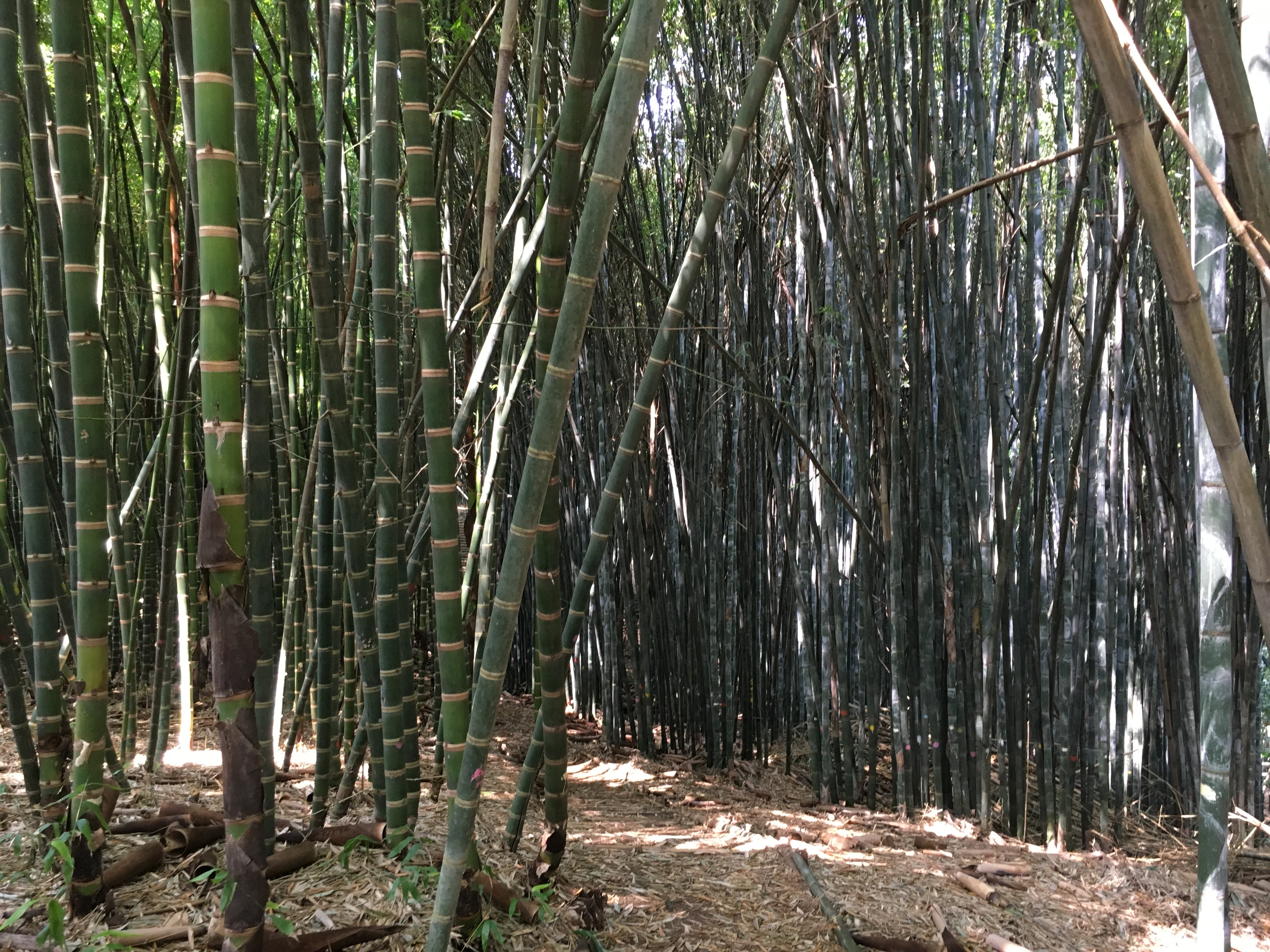
Bamboo plantation in Mexico
Carbon sequestration
Bamboos are a particularly effective natural carbon sink option as the roots and rhizomes stay in the ground when the bamboo culm is cut, and they continue to store considerable amounts of carbon. The bamboo carbon sink is therefore not just an above-ground phenomena, but it includes a considerable below-ground reservoir. This is different from tree forests, where the roots die and the underground capture is lost when the trees are cut.
A model of a well-managed bamboo plantation in Central China shows that over a period of 60 years, it will have created an aggregated carbon stock of approximately 300 tonnes of Carbon per Hectare, compared to less than 180 tonnes of Carbon per Hectare for a Chinese fir tree plantation. More recent estimates of carbon storage in bamboo forests in China range from 94 – 392 tC/Ha.
In addition, bamboo can be used to manufacture durable products which store carbon over several years, and over a period of 30 years, carbon stored in bamboo products produced from 1 ha is between 70 and 130 tC. Taking these various aspects together, recent report state that a bamboo plantation in China can store 160-530 tC/ha, which is more than many tree forests. Maybe even more carbon is stored in a tropical bamboo forest, where temperatures are higher, but I am not aware of research findings to confirm this.
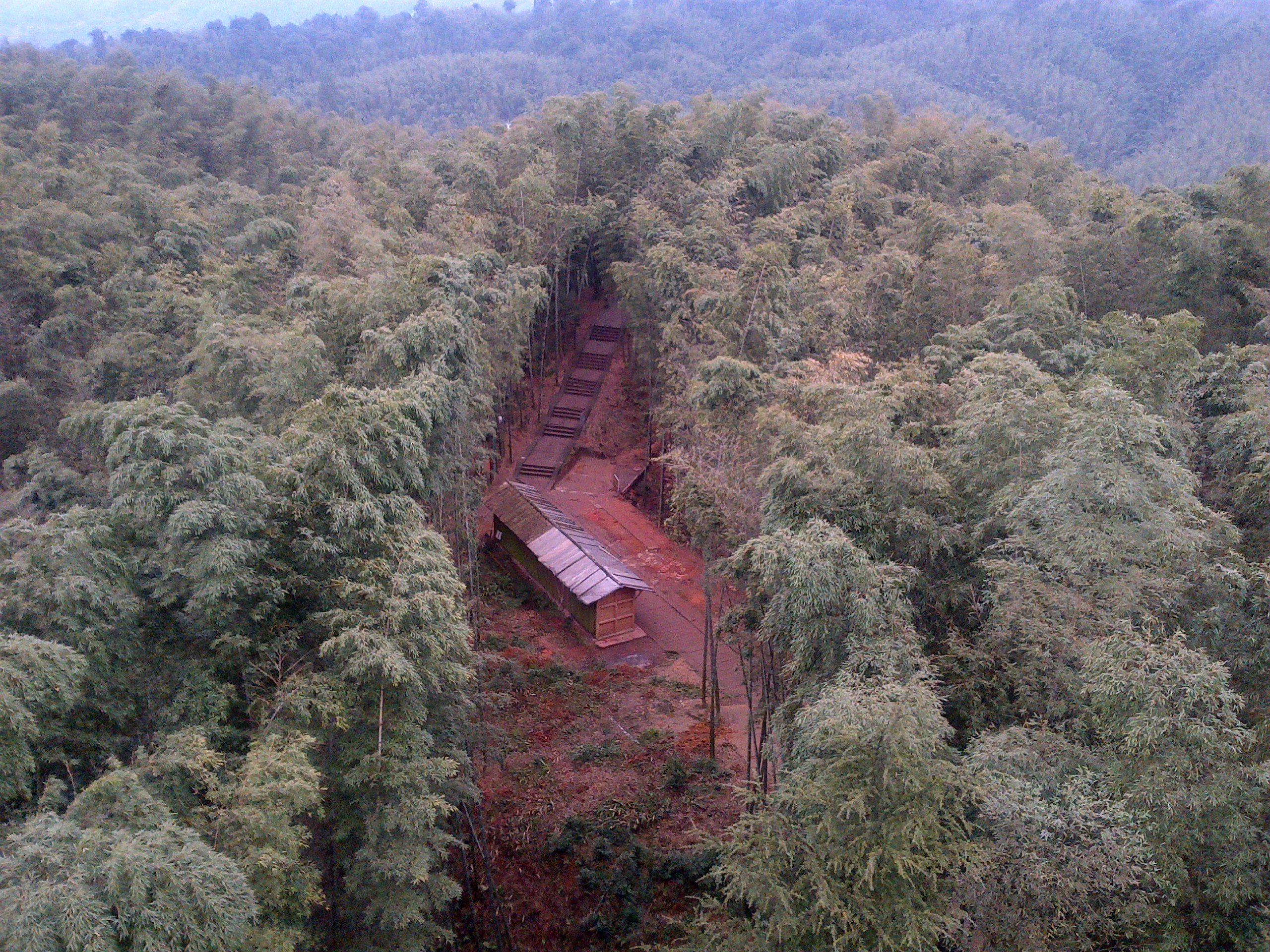
Bamboo plantation in Chishui, Guizhou Province, China
Renewable energy
There are several ways in which bamboos can help to achieve SDG7 for renewable energy. Because bamboos grow quickly and do not require re-planting when harvested, an established and well-managed bamboo plantation can provide a continuous supply of fuel.
Bamboo poles are hollow and therefore bamboo is not as efficient for household firewood as solid wood. However, when bamboo is used to produce charcoal it is a different story, and I wrote about this in 2014. Currently, some 80% of Africa rural households use charcoal for cooking, and this is one of the main causes for deforestation on the continent. Most charcoal is produced from (sometimes illegally) cut trees and bushes. Using woody bamboo poles – giant grass – instead, would reduce deforestation rates and create legal employment opportunities. And bamboo charcoal is just as good; research in Ethiopia showed that the calorific values are similar to acacia charcoal, and charcoal from the invasive weed Prosopsis. Bamboo charcoal burns without much smoke because it has little volatile matter, and this important when the cooking fires are in huts or small houses without good ventilation. When the charcoal is molded into briquettes, it can be used in energy-efficient stoves, to enhance to efficiency.
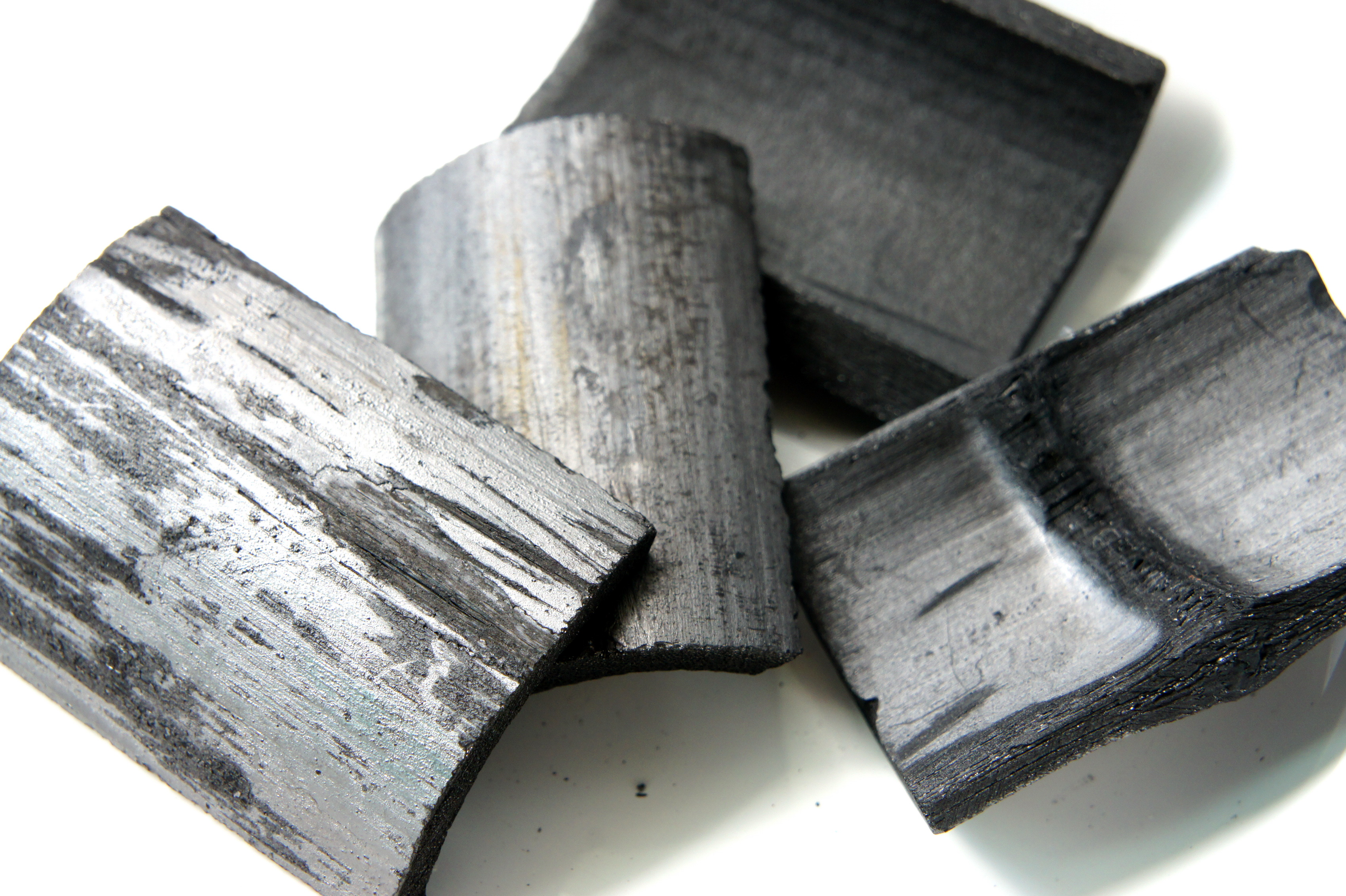
Bamboo charcoal. Wikimedia, photo by Malcolm Koo
Another way of using bamboo for energy is as fuel for community gasifiers, creating syngas to power small generators. Growmore Biotech in India has successfully used a variety of Bambusa Balcoa, called BEEMA bamboo to generate energy through gasification in several locations in India. The methodology is now implemented in other countries as well. Meanwhile, in Indonesia, electricity produced through gasification of bamboo is piloted in three villages on the island of Siberut, the largest of the Mentawai Islands. Feasibility studies show that two bamboo poles – each weighing approximately ten kilograms – can provide enough energy for a single family over a 24-hour period. To maximize impacts, the by-product – charcoal – will also be used for cooking and fertilizing soil.
At a larger, industrial scale, bamboo fibre can be used to produce pellets, similar to wood pellets. This is a particularly profitable use of sawdust or off-cuts from other industry lines, but pellets can also be made from smaller bamboo poles that may not be suitable for other uses. A study in 2016 compared three types of bamboo pellets with pellets from Eucalyptus and concluded that the bamboo pellets were suitable as a potential source of renewable energy. Europe would be an obvious market, as the Europe 2020 strategy includes a target of reaching 20% of gross final energy consumption from renewable sources by 2020, and at least 32% by 2030.
Land management and erosion control
Bamboo forests are habitats for a variety of key species, including giant and red pandas in Asia, mountain gorillas and lemurs in Africa and a number of birds in Latin America. Maintaining the natural bamboo habitat is therefore important for the survival of these animals. Fortunately, bamboos are able to thrive on degraded soils and steep slopes where many plants cannot grow. They have extensive fibrous root systems that enables bamboos to survive and regenerate when the biomass above ground is destroyed, even by fire. This make them very suitable to help stabilize slopes and prevent soil erosion, and bamboos are therefore often planted along waterways.
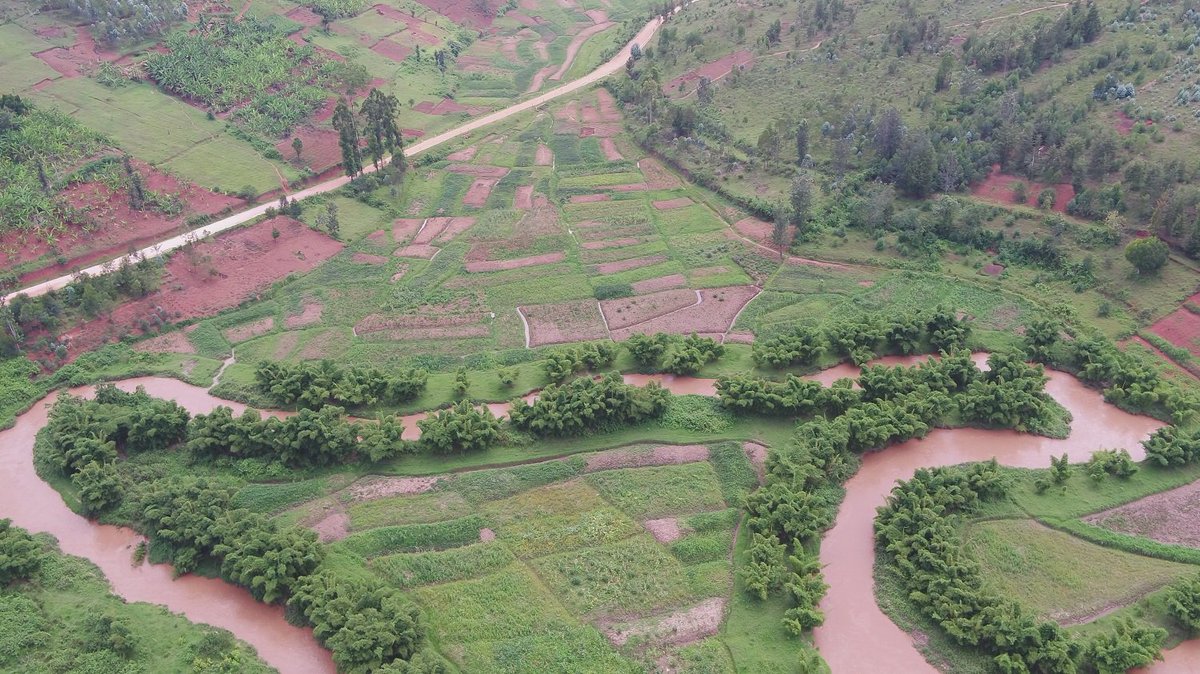
Bamboo along the riverbanks in Rwanda – photo from Lake Victoria Environmental Management Project (Phase 2).
Many bamboo species possess qualities that make them ideal for restoring degraded lands. The fast growth and dense roots and rhizomes create an ability re-vegetate and restore productivity to bare land over a short period. In fact, sustainable harvesting of bamboo, at between a sixth and a third of the stand every year, encourages thicker growth of the stand in subsequent years. Continuous leaf fall during the year creates a natural layer of humus at the base of the bamboo plants, and this improves the soil quality under a bamboo forest. For these reasons, an increasing number of countries have begun to explicitly include bamboo as a priority species for use in landscape restoration.
A 2018 INBAR/FAO/NEPAD publication about bamboo for land restoration reviewed 14 case studies where bamboo was used for erosion control and land restoration from different locations in Africa, Asia and Latin America. The results show that, when properly selected and well managed, planting bamboo can improve the soil quality of degraded land and even raise the groundwater table.
Adaptation and food security
Bamboo can also play a key role in adaptation to the effects of climate change. Its resilience provides an alternative option for development, and a certain insurance against droughts, floods and snow. A farmer who includes bamboo in his or her fields will most probably have poles to sell even if the other crops are destroyed by drought, floods or other calamities.
Bamboo production generally starts with harvesting bamboo by hand and pre-processing with simple tools. Further down the value chains, many more jobs are created in different stages of treatment, processing and manufacturing. In China, nearly 10 million people are employed in the bamboo sector, and it is estimated that globally some 2.5 billion people depend on bamboo.
Another aspect of increased resilience is that bamboo shoots are both a delicacy and part of the local diet in many Asian countries. Bamboo shoots production is an effective means of reducing poverty, as was illustrated by a case study in Lin’an County, Zhejiang Province of China. With relatively high nutritive and evergreen characteristics, bamboo leaves can also be a useful supplementary fodder for livestock, small stock and even fish farms.
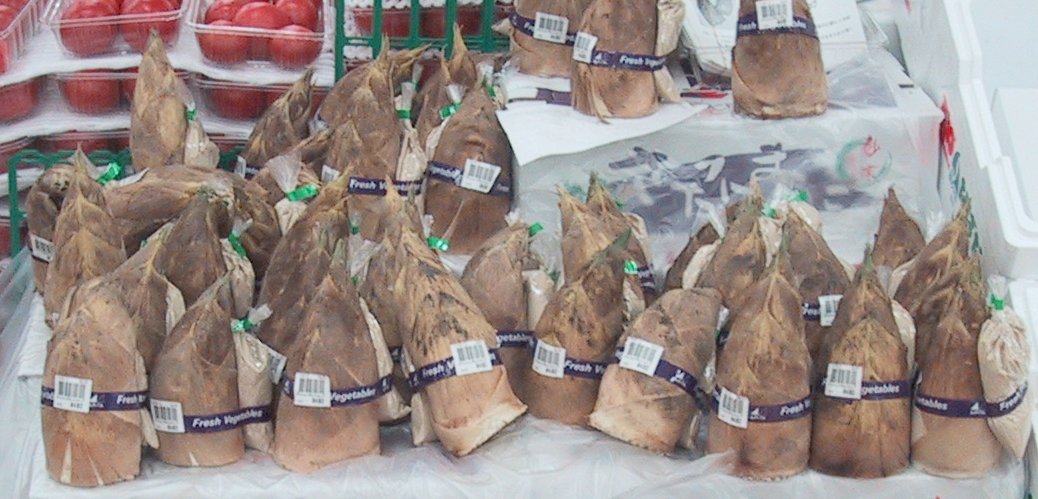
Bamboo shoots in supermarket – photo from Wikipedia by Chris 73
Employment through construction and design
In tropical rural areas, bamboo is still used for farm houses and local buildings, as a cheap alternative to timber. Rural communities or individual farmers under climate change stress can build with bamboo that is readily available, and building with bamboo makes housing repairs and extensions easy as the poles are relatively light.
Bamboo poles are also use to create magnificent constructions such as the Green Village in Ubud, Bali, the Panyaden International School sports hall in Chiang Mai, Thailand or the INBAR Pavilion in the 2019 Beijing Horticultural EXPO. But these bamboo palaces are built in areas where the bamboo grows in abundance, and it would not be realistic to consider such large bamboo pole constructions in Europe.
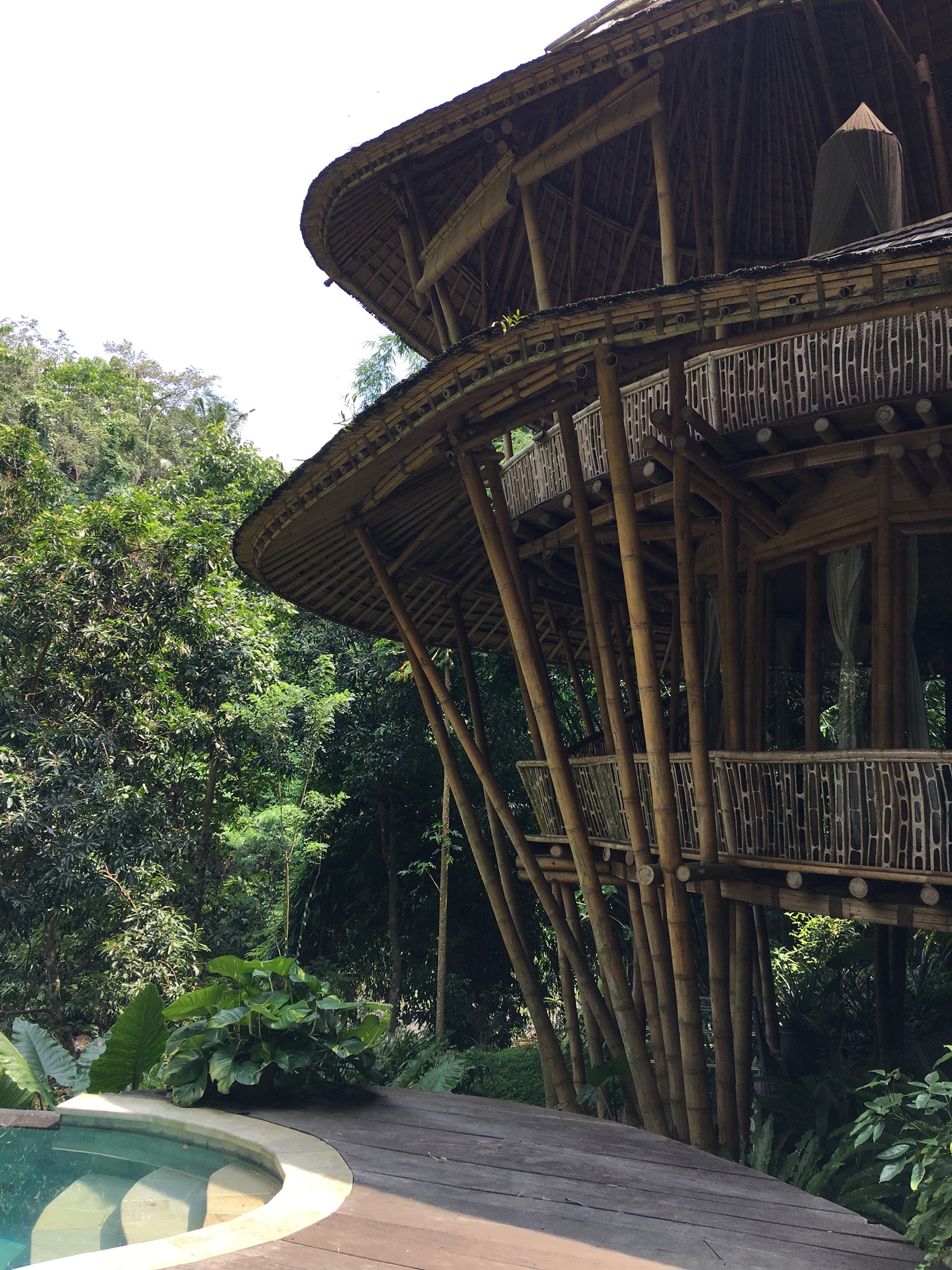
A majestic bamboo house in the Green Village, Ubud, Bali
Transporting bamboo poles internationally is not very efficient, as the poles are hollow, and you therefore transport a lot of air. This is one of the reasons for the growing interest in engineered bamboo as a resource for the manufacturing of furniture, flooring and interior design. The global export value of these products was more than USD 1.7 billion in 2017, and the main supply chain is from East and southeast Asia to Europe and the USA.
Recent media reports suggest that climate change is driving urban architects also to consider treated timber and engineered bamboo as a resource for construction, which would significantly reduce greenhouse gas emissions from urban development. One of the first such projects was the construction of the ceiling of Terminal 4 of Madrid International Airport, and more recent examples include the CityLife Shopping Mall in Milan and Hotel Jakarta in Amsterdam
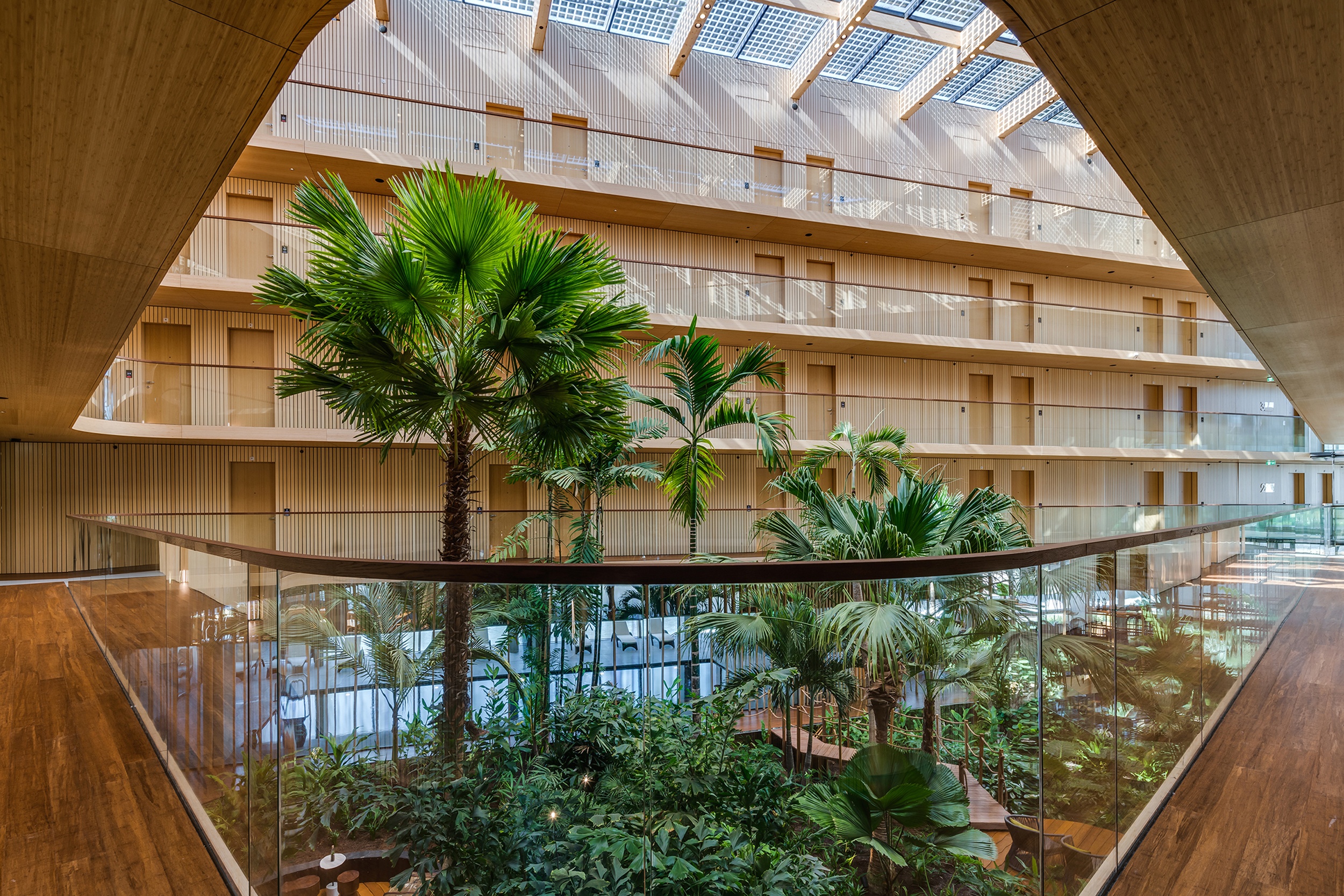
Hotel Jakarta, Amsterdam. Photo by MOSO International B.V.
Conclusion
Bamboo has an important role in mitigating the impact of climate change and helping communities to adapt to the effects of climate change. These effects may be most apparent in countries where bamboo grows naturally, but opportunities also arise in Europe and the USA, where the market for bamboo products is most advanced.

Dear Dr. Hans,
Very well written article on the role of bamboo to reduce carbon foot print. Bamboo is the most cost effective solution for CARBON CAPTURE through charcoal in the form of BIOCHAR. In India, Beema bamboo have been identified by CEMENT Industries to replace coal. I am sure your article will creat much more awareness amongst the international community.